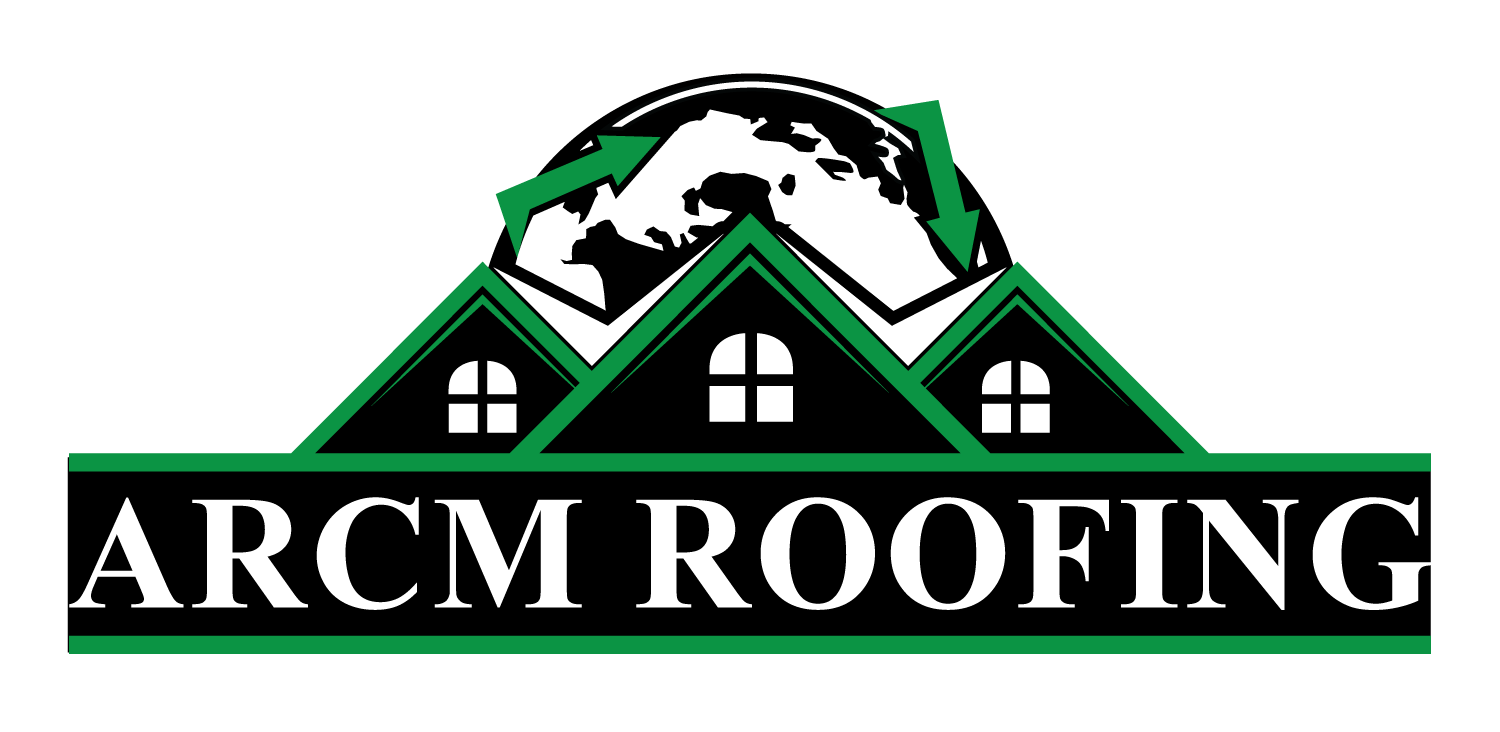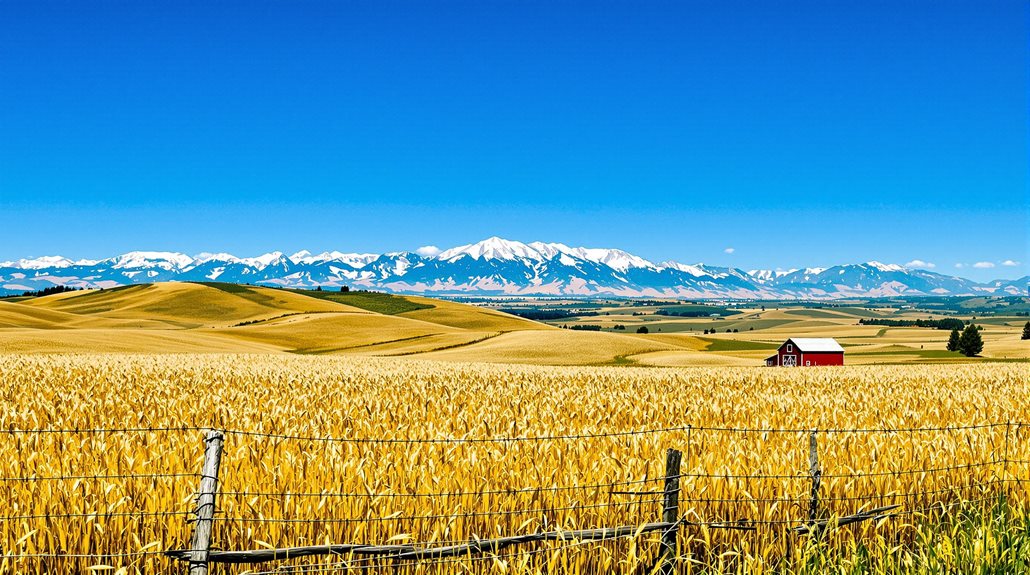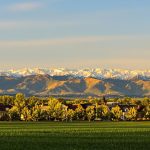Wheat Ridge, Colorado, originated as a resting point for Gold Rush miners in 1859, named for its golden wheat ridges seen by travelers on the Overland Trail. It evolved from wheat fields to fruit and vegetable farms, gaining fame as "Carnation City." Today, it offers over 20 parks, extensive trails, and unique attractions like the Brass Armadillo Antique Mall. Visitors are drawn to its historical charm and diverse living options, with more insights waiting on its cultural and community developments.
Expert Highlights
- Originated as a rest stop during the 1859 Gold Rush.
- Named for golden wheat ridges along the Overland Trail.
- Earned "Carnation City" nickname for large carnation production.
- Offers over 20 parks and extensive trail systems.
- Located near Denver with diverse residential options.
History of Wheat Ridge
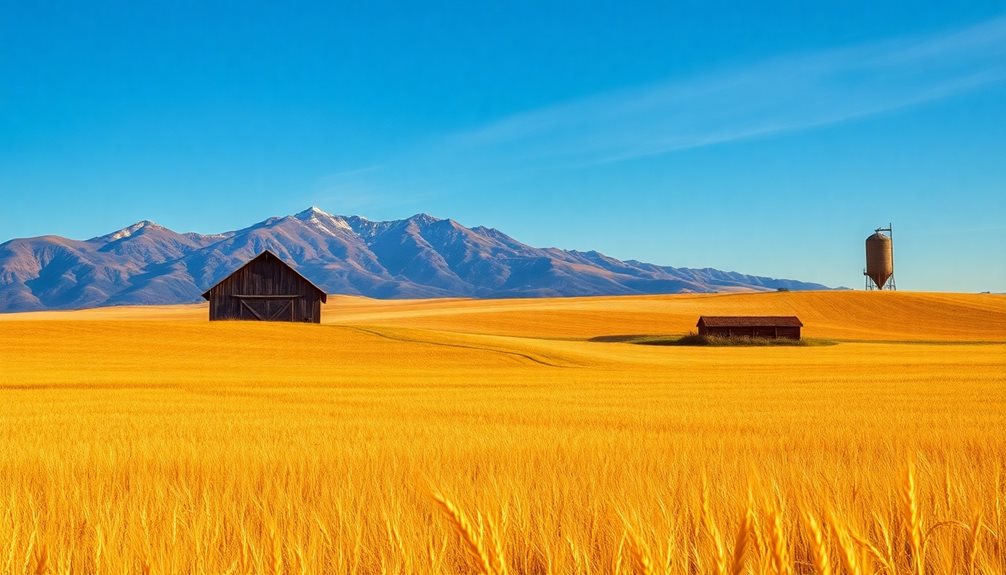
The history of Wheat Ridge, Colorado, is deeply intertwined with the broader historical context of the region, dating back to the Gold Rush of 1859, when the area served as a strategic rest stop for miners heading to mountain gold camps.
It was named for the golden ridges of wheat observed by travelers on the Overland Trail. As miners returned and began farming, the community grew, shifting from wheat fields to fruit orchards and vegetable farms.
Eventually, it became known for carnation production, earning it the nickname "Carnation City."
Today, Wheat Ridge's charm continues to attract visitors and new residents seeking a blend of historical significance and modern community living.
Things to Do
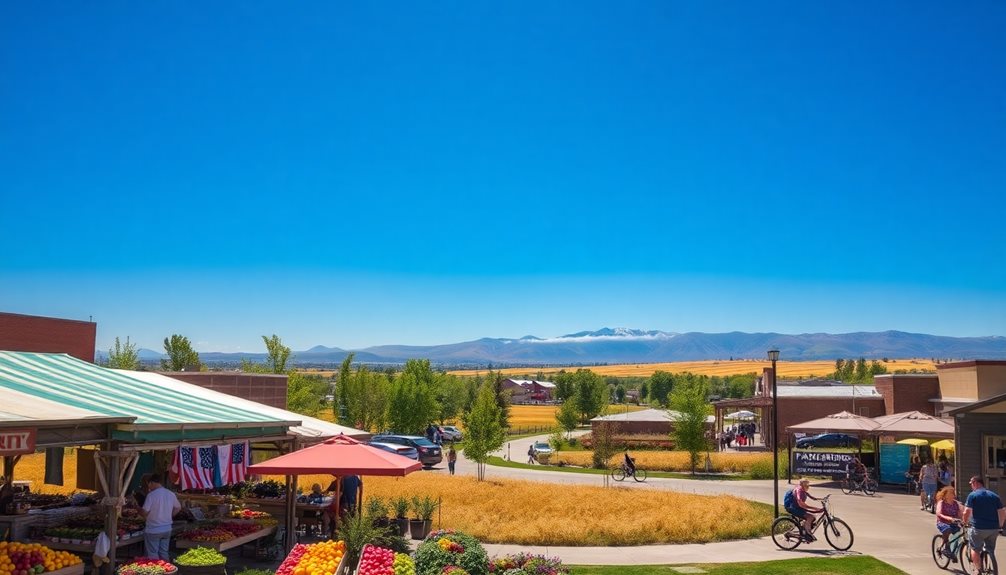
While exploring Wheat Ridge, visitors can engage in an array of activities that highlight the city's natural beauty and vibrant community.
Wheat Ridge offers outdoor enthusiasts numerous parks and trails, including the Clear Creek Trail. This variety creates a welcoming environment for both locals and tourists.
Like nearby Lafayette's local scene, the city provides plenty of opportunities for community engagement and exploration.
Some notable activities include:
- Hiking: Explore the Wheat Ridge Greenbelt and the Front Range trails.
- Fishing: Enjoy fishing in lakes like Bass Lake and Tabor Lake.
- Antique Shopping: Visit the Brass Armadillo Antique Mall for unique vintage items.
Places to Visit
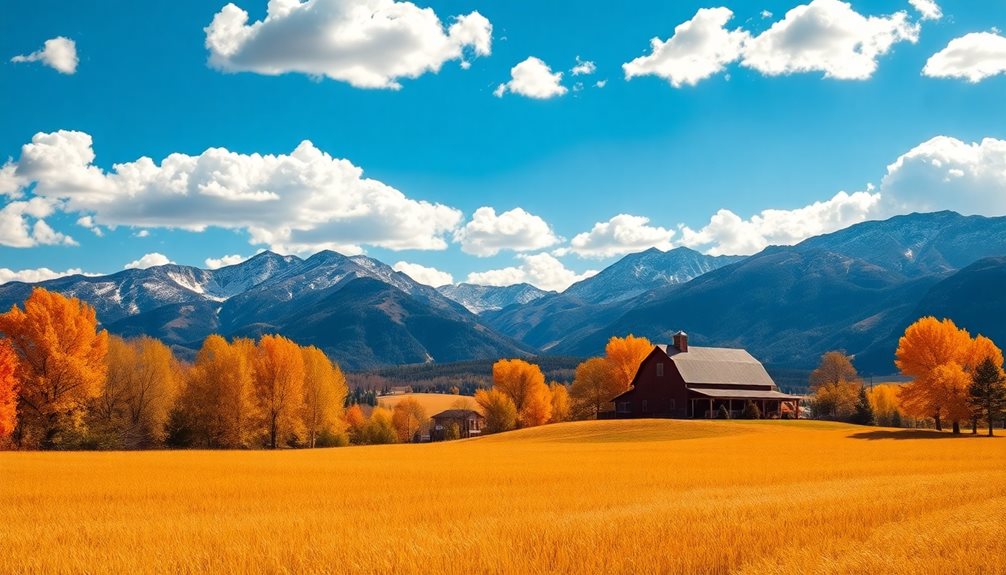
As travelers explore Wheat Ridge, Colorado, they will discover a diverse array of places to visit, each offering unique experiences that reflect the city's rich history and natural environment.
The Brass Armadillo Antique Mall is a prominent destination, featuring over 600 dealers across nearly 50,000 square feet.
Visitors can also explore Anderson Park, which offers playgrounds and connections to larger park systems.
Additionally, the Wheat Ridge Greenbelt provides extensive outdoor trails and scenic views, showcasing the community's commitment to both cultural and natural attractions.
Living and Community**
Residents of Wheat Ridge, Colorado, experience a strong sense of community, supported by a variety of living arrangements tailored to diverse needs.
Community features include:
- Senior Housing: Options like MorningStar Assisted Living and Town Center Apartments offer supportive environments.
- Diverse Developments: New residential projects add to the community's housing diversity, incorporating both market-rate and affordable living.
- Community Services: Amenities such as gardens, pet areas, and local transportation enhance residents' quality of life.
Expert Final Thoughts
Wheat Ridge, Colorado, combines a rich historical base with vibrant contemporary attractions. From its origins as a Gold Rush rest stop, it evolved into a thriving agricultural community, earning the nickname "City of Carnations." Today, it offers diverse cultural sites like the Brass Armadillo Antique Mall and extensive outdoor opportunities such as the Wheat Ridge Greenbelt. The city's blend of community spirit and urban accessibility makes it an attractive hub in the Denver metropolitan area.
